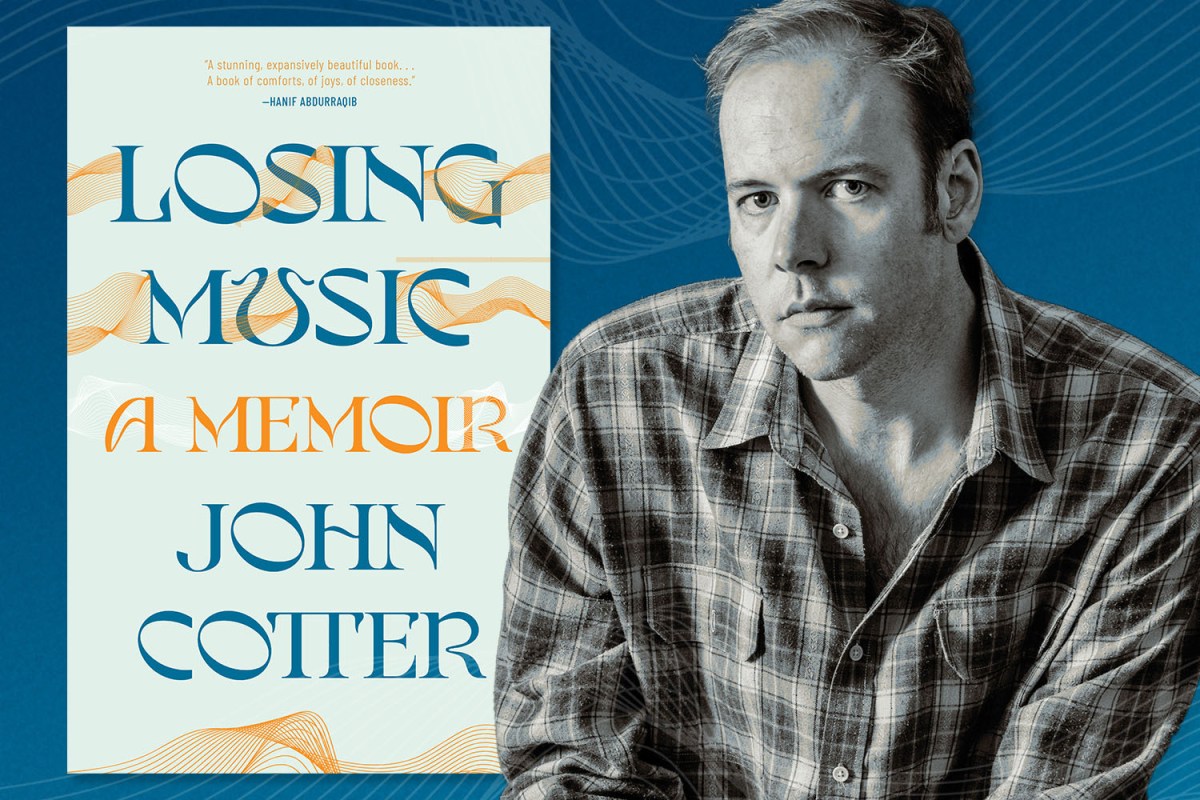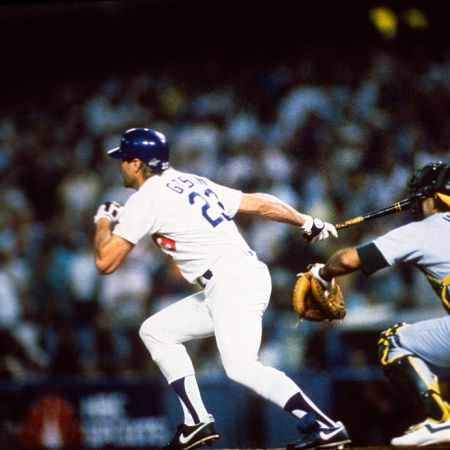What happens when your own body begins to betray you in a series of increasingly confusing ways? That’s the conundrum at the center of John Cotter’s new memoir Losing Music, which recounts his experience living with Ménière’s disease, a chronic condition that affects over half a million people in the United States, often resulting in vertigo and hearing loss, among other symptoms.
Writing at The Washington Post, Lisa Zeidner noted that the memoir “offers a compelling portrait of how deafness isolates people from even those closest to them.”Losing Music is a powerful and complex look at the sudden changes a diagnosis can bring to someone’s life — and the challenges it can take to get that diagnosis in the first place.
In this excerpt from Losing Music, Cotter describes his visit to the Mayo Clinic as he and his family attempt to discover more about his condition.
Once the nurse had my clothes off and had positioned me on a gurney at the entrance to a man-sized toaster, she began to sprinkle me with powder, beige stuff, face to toes, then smoothed it in like you would a dry rub. My hearing aids were tucked in a locker. I felt panicked without them.
“Everything off,” she’d repeated, directing me to the changing closet. This clarified the role of the hearing aids: they were an appurtenance only, nonessential. They weren’t like the cow membrane I’d needed to have grafted to my spine as a teen, or the titanium bar fastened onto the bones of my wrist after a fall. They didn’t make me transhuman. They could be broken with ease, lost or taken.
I stared up at the nurse. The fluorescent light didn’t silhouette her. It was a clinical light in a white room, but the sterility of the place was necessary. If I wanted a cure for this thing that had happened to me, I had to diagnose it first, and diagnosis required all-white rooms.
She said, “You’ll be able to wash the powder off later. With luck, it will have changed color by then.”
The change in color of the powder would be accomplished—or not—by heat. Heat that would emanate from the toaster, a walk-in box adorned with tinfoil and bare joints.
The nurse — I never got her name — wore gloves as she dusted me, the powder less coarse than I imagined before it covered my skin.
I felt like a pharaoh on the slab, being rubbed with natron salt before I was wrapped. Tense, I tried a joke. I had trouble hearing my own voice so I talked in a bar voice.
“Is that thing going to pop me out the top when I’m done?”
She gave me a look that implied she’d heard every joke a naked man can make and hadn’t cared for one of them.
“So, okay, so you wheel me into the machine and then what happens?”
She kept her eyes on the spots where my torso connected with the gurney. She’d missed them in her first pass.
“Then we test the brain’s response to heat.”
“My whole nervous system, though, right? The autonomic pathways?”
“Well!” she said, as though that were the last word. “I guess you’ve already read about it.”
I’d only scanned Wikipedia on my phone in the waiting room. I still didn’t understand the powder.
“It turns purple,” she said, “if you sweat right.”
She was correct: I did end the afternoon on the purple side; emerging from the toaster, I resembled a 6’4″ bruise, or maybe a carnival dancer. But that was still to come. As she worked the powder up around my ears, I asked, “What sort of diseases would make me not turn purple?”
“Oh,” she said, as though putting the subject to bed now for good, “all kinds of things.”
Medical personnel are very good at explaining things in either the simplest or the most complex possible terms, but little in between. Jargon has a lot to do with this, but so does a vague contempt for patients that develops as a by-product of guarding yourself against emotional collapse. If you don’t have time to cry about everything, you wind up compensating with a roll of your eyes.
There’s an additional reason for all those zero-to-sixty explanations, though. It’s one we hesitate to talk about because we actively fear it. But that doesn’t make it less real. Often, doctors and nurses and technicians, medical journals and studies and pop science, are bad at explaining things because the embarrassing truth is that none of them understand what’s really going on. Around certain diseases, particularly those of diagnostic exclusion — diagnoses unverifiable through tests — there exists a hearty portion of bluffing. Whatever was wrong with my ears or brain or nerves — whatever caused me to collapse and the world to spin around me, caused all external sound to disappear without warning, and take on a jet-engine roar only I could hear — was one of these mystery conditions, the kind no one wants to admit being baffled by. Consequently, I saw a fair bit of bluffing at the Mayo Clinic. No one shocks as readily as a cynic, so of course I was shocked by it.
“What kind of music do you want in the chamber,” the nurse asked, removing her beige-powder gloves.
“Whatever you play I probably won’t hear too well. So, just play your favorite.”
She wheeled me into the device. Through a window to my right I watched her manipulating dials. Just then, as the red bars lit above me and my skin began to prick the way skin does on a hot, beachy day, I heard music coming faintly from a speaker above.
It dawned on me I ought to have said, “Play anything except for Frank Sinatra.” But there it was:
Come fly with me!
Let’s fly, let’s fly away.
*****
The toaster test turned out to be something called a thermoregulatory sweat test, one that measures the body’s response to heat: if your skin doesn’t warm in the proper pattern, then your nervous system might be damaged. My nervous system appeared to be functioning well, but I didn’t know that when I landed at the Rochester, Minnesota, airport three days before. I didn’t want to test positive in a nerve damage test per se, but I wanted to find a test that diagnosed me, either curing me or putting a name to whatever was wrong.
The Mayo Clinic has a reputation. “They’ll fix you up,” old friends assured me before my visit. Every time my courage began to falter in the run-up, Elisa would say, “Just wait and see what Mayo says.” This confidence is at least two generations old. According to Leonard Berry and Kent Seltman’s Management Lessons from Mayo Clinic, polling respondents in 1961 were already referring to the Mayo Clinic as “a court of last resort — the ‘Supreme Court’ of Medical Opinion.” More recently, in a national survey from 2007, respondents were asked “what healthcare institution they would choose for themselves or a family member if insurance or finances would permit them to go anywhere.” Mayo Clinic was mentioned more than twice as frequently as anyplace else.
But the particularities of visiting Mayo aren’t the sort of things people think about until they get sick. At the time of my visit — early 2014 — Mayo’s website advised prospective patients to expect a week-long stay. Such a stay would cost hundreds before travel was factored in. And I couldn’t travel alone. My new marriage to Elisa meant I now had health insurance to pay for the visit, but it came with a $2,000 deductible. I was working less, earning less thanks to the mystery illness, but Elisa couldn’t make the trip; my mother saved the day, offering not only to fly there along with me but to pay for both of our flights and our hotel. I agitated through the nights on the week leading up to the journey, away from Elisa, in Connecticut’s post-Christmas fade, while my mother worried over what warm clothes to pack. Then we flew north, straight into the cold.
Rochester knocked together an airport early last century for near-exclusive use by patients of Mayo Clinic. While Mayo directly employs only a third of Rochester residents, most of the rest work in subsidiary jobs: long-stay hotels, meals, transportation, and a city government that takes its marching orders from HQ. It’s the kind of relationship with a single employer you don’t see much in midsize cities anymore. Rochester is a company town.
Timing, as usual, was everything: the post–Civil War decades were boom years for clinical breakthroughs and the brothers Mayo were smart enough to understand what was happening around them. The germ theory of disease was only then coming into common practice, and so the Mayos were relatively unique in their insistence on sterile theaters. Thanks to chloroform, patients and surgeons were no longer made to endure what Fanny Burney described in 1811 as the “unavailing wretchedness” of procedures without anesthetic. In the early years of that century, following a partial mastectomy, Burney, still weeping in postsurgical agony, wrote to her sister describing what the nightmare had been like:
“I then felt the Knife tackling against the breast bone — scraping it! — This performed, while I yet remained in utterly speechless torture . . . I then saw my good Dr Larry, pale nearly as myself, his face streaked with blood, its expression depicting grief, apprehension, & almost horror.”
The trenches of World War I and the Spanish flu presented entirely novel horrors, and in the wake of a rush of patients to Rochester, the brothers Mayo fell upon a new idea: a clinic of salaried physicians, the first anywhere of its kind, and a principal of organization that would make their family name into what Berry and Seltman call “one of the most influential and valuable service brands in the world.”
Valuable here is a charged word, in that the value so many pilgrims place on a journey to Mayo often consists not only of money they’ve saved or borrowed but of their own continued existence. The value can be life itself.
As we taxied in on arrival, I switched my phone out of airplane mode. A long row of weather alerts appeared, their tone increasing in alarm as we rushed through the cold to our long-stay hotel. Meteorologists recommend no more than three minutes’ exposure to the cold . . . try to travel in groups . . . always let someone know where you are . . . only go outdoors if you cannot possibly avoid it . . .
As I settled in over the next few days of my stay, what worried me about the cold was not the number of warnings, or even the feel of the air, it was the fact that even the locals seemed alarmed. As in Jack London’s “To Build a Fire,” spit crackled when it hit the snow. The wind wasn’t hard — doors weren’t obstinate — but there wasn’t any part of your body that wasn’t cold outdoors: shivers under your arms, stinging thighs, a blade at your back. Your body stiffened and resisted movement. Nobody walked outside, they ran. And nobody joked about the cold.
The 10 Books You Should Be Reading This April
Including maritime mysteries, candid memoirs and a dispatch from MiamiOn arriving at our hotel, we passed a woman emerging with her partner, or her father, or her son? The hood and scarf she wore weren’t the only reasons it wasn’t possible to guess her age: disease had withered her, and it frightened me to see it. People close to death develop a certain look, a dazed extremis. Who knows what she looked like when she was well, maybe weeks before? I carried a suitcase in one hand and a bag in the other, and amazingly she remained at the hotel entrance to hold the door for me. I offered a smile, but a joke about the cold died in my throat. I didn’t want to waste her time.
Where was she going now that clinic hours were through? Probably the same place my mother and I dashed to an hour later, after stowing our bags in a room that had seen more than its share of bad nights. We were planning on a boisterous late dinner at the Canadian Honker next door, but I didn’t feel good. “How many people have died in this room, do you think? Or slept their last night?”
“Don’t be so dark,” my mother said. “Try to think of all the people who got a good night’s sleep here once they knew they’d be cured.”
Dinner, we decided, would cheer us both, and we managed to find seats just before the Canadian Honker’s kitchen closed.
Cheese curds, it turns out, are just fried cheese. Expecting Mayo would be taking blood the next day, I asked about the liver and onions and was told people came from “miles around” to partake of it. I ordered the dish and grew convinced those miles-long travelers came only once.
On the space walk thirty feet to our hotel, and once my hearing aids were off and I was alone in bed with the roaring in my ears and with my thoughts, I tried to encourage myself about the week that lay ahead and to fight back fear. None of the doctors I’d seen so far had been able to help, but maybe someone at Mayo could.
Excerpted from Losing Music: A Memoir by John Cotter. Published with permission from Milkweed Editions.
Whether you’re looking to get into shape, or just get out of a funk, The Charge has got you covered. Sign up for our new wellness newsletter today.
























